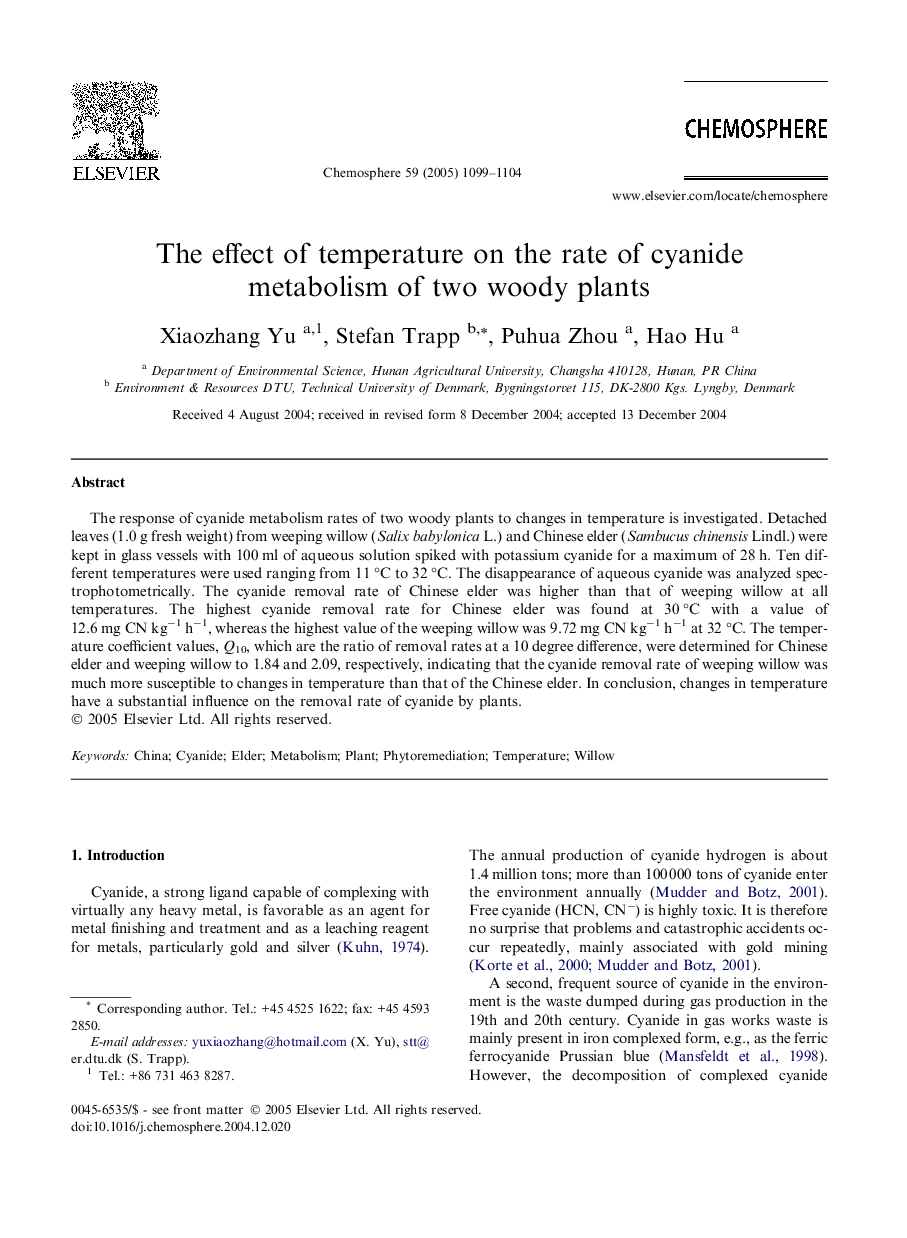| Article ID | Journal | Published Year | Pages | File Type |
|---|---|---|---|---|
| 9452185 | Chemosphere | 2005 | 6 Pages |
Abstract
The response of cyanide metabolism rates of two woody plants to changes in temperature is investigated. Detached leaves (1.0 g fresh weight) from weeping willow (Salix babylonica L.) and Chinese elder (Sambucus chinensis Lindl.) were kept in glass vessels with 100 ml of aqueous solution spiked with potassium cyanide for a maximum of 28 h. Ten different temperatures were used ranging from 11 °C to 32 °C. The disappearance of aqueous cyanide was analyzed spectrophotometrically. The cyanide removal rate of Chinese elder was higher than that of weeping willow at all temperatures. The highest cyanide removal rate for Chinese elder was found at 30 °C with a value of 12.6 mg CN kgâ1 hâ1, whereas the highest value of the weeping willow was 9.72 mg CN kgâ1 hâ1 at 32 °C. The temperature coefficient values, Q10, which are the ratio of removal rates at a 10 degree difference, were determined for Chinese elder and weeping willow to 1.84 and 2.09, respectively, indicating that the cyanide removal rate of weeping willow was much more susceptible to changes in temperature than that of the Chinese elder. In conclusion, changes in temperature have a substantial influence on the removal rate of cyanide by plants.
Related Topics
Life Sciences
Environmental Science
Environmental Chemistry
Authors
Xiaozhang Yu, Stefan Trapp, Puhua Zhou, Hao Hu,
